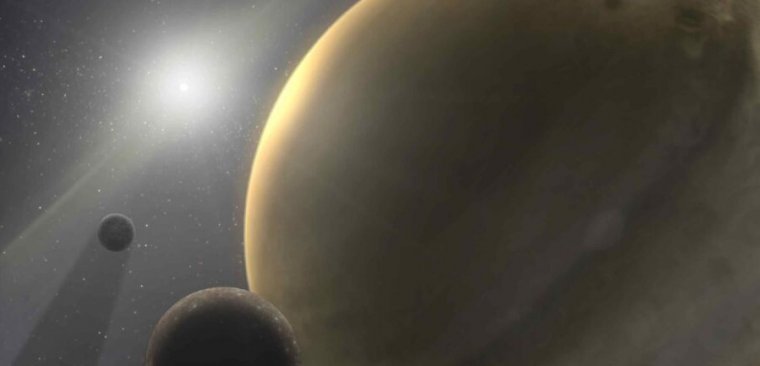Exoplanet in the hot-Neptune desert is the first of its kind

Enlarge / Artist's conception of a gas giant planetary system. Unlike TOI-849b, this one still has its enormous gassy envelope. (credit: NASA/JPL-Caltech)
In 2018, scientists monitoring TESS-the Transiting Exoplanet Survey Satellite-discovered a giant planet in close orbit around the star TOI-849, roughly 735 light years away. Nature recently published a paper from scientists at the Centre for Exoplanets and Habitability that describes this planet in detail.
TOI-849b is roughly 40 times the mass of Earth, which would normally indicate a gas giant, weighing in somewhere between Saturn and Neptune. Yet its radius is smaller than Neptune's, although it has more than double Neptune's mass. Since it's hard to see how that can happen in a gaseous world, the scientists suggest that the planet may once have been a gas giant, stripped now nearly to its solid core. The alternative is that it might have formed in a highly unusual way that allowed it to avoid accumulating much gas in the first place.
TOI-849b's host star is a late G-class yellow dwarf, a little cooler and approximately 2 billion years older than our Sun, with about nine-tenths its mass and radius. TOI-849b is very close to its host-its orbital period is a little over 18 hours. That means the farthest distance from its star is only 0.02 Astronomical Units (the typical distance between Earth and our Sun). For reference, our own Mercury orbits the Sun nearly 20 times more distantly, at almost 0.4 AU.
Read 4 remaining paragraphs | Comments